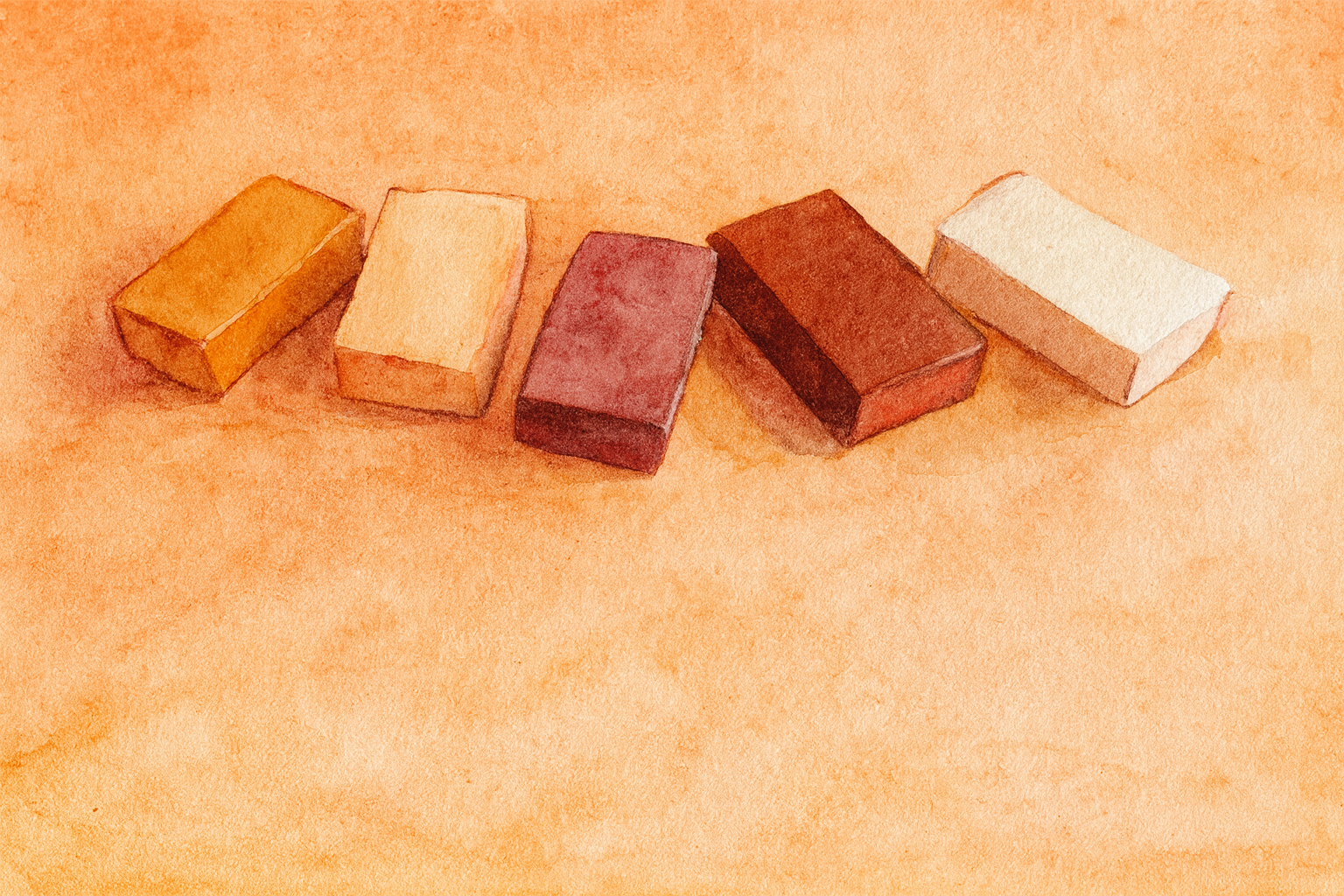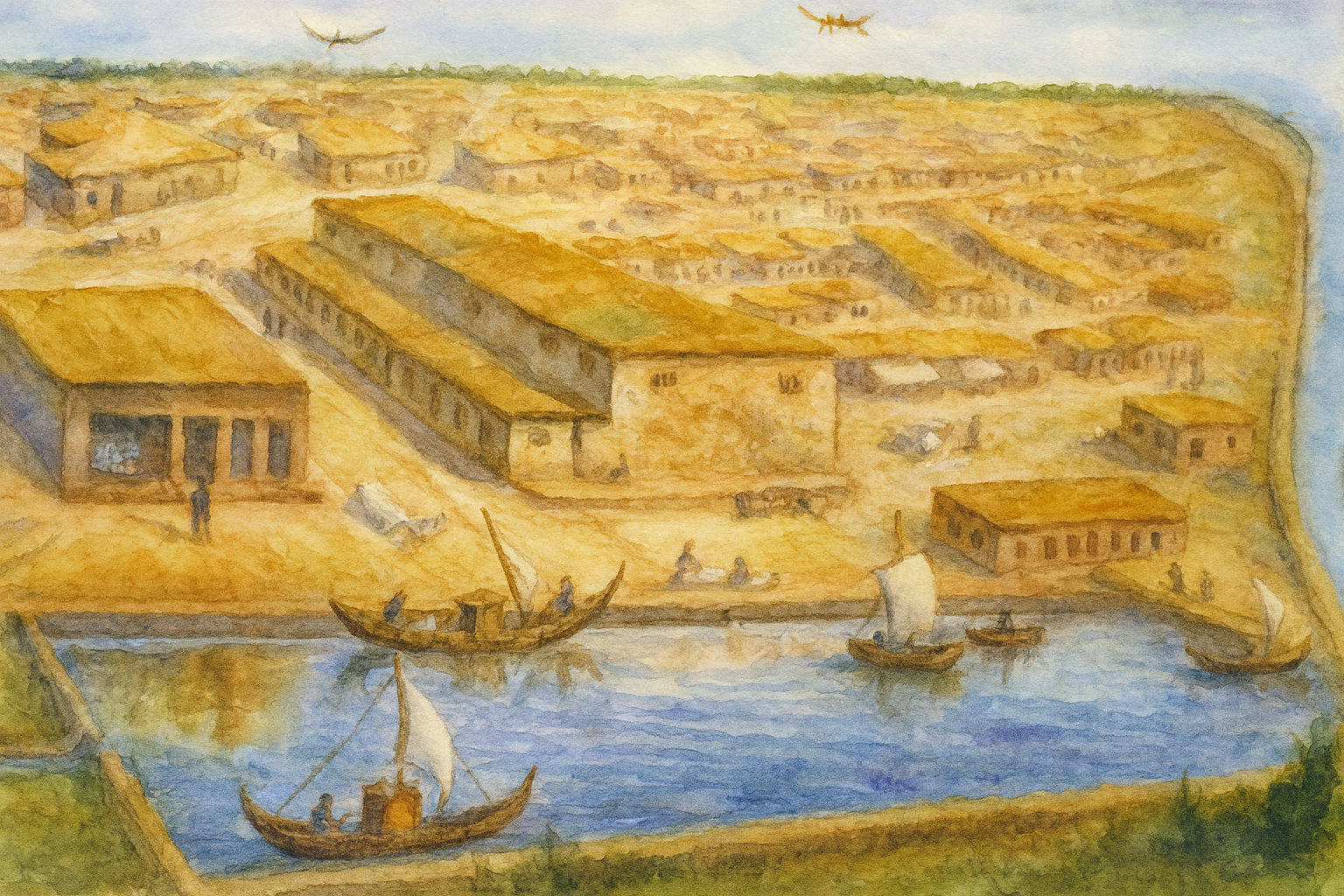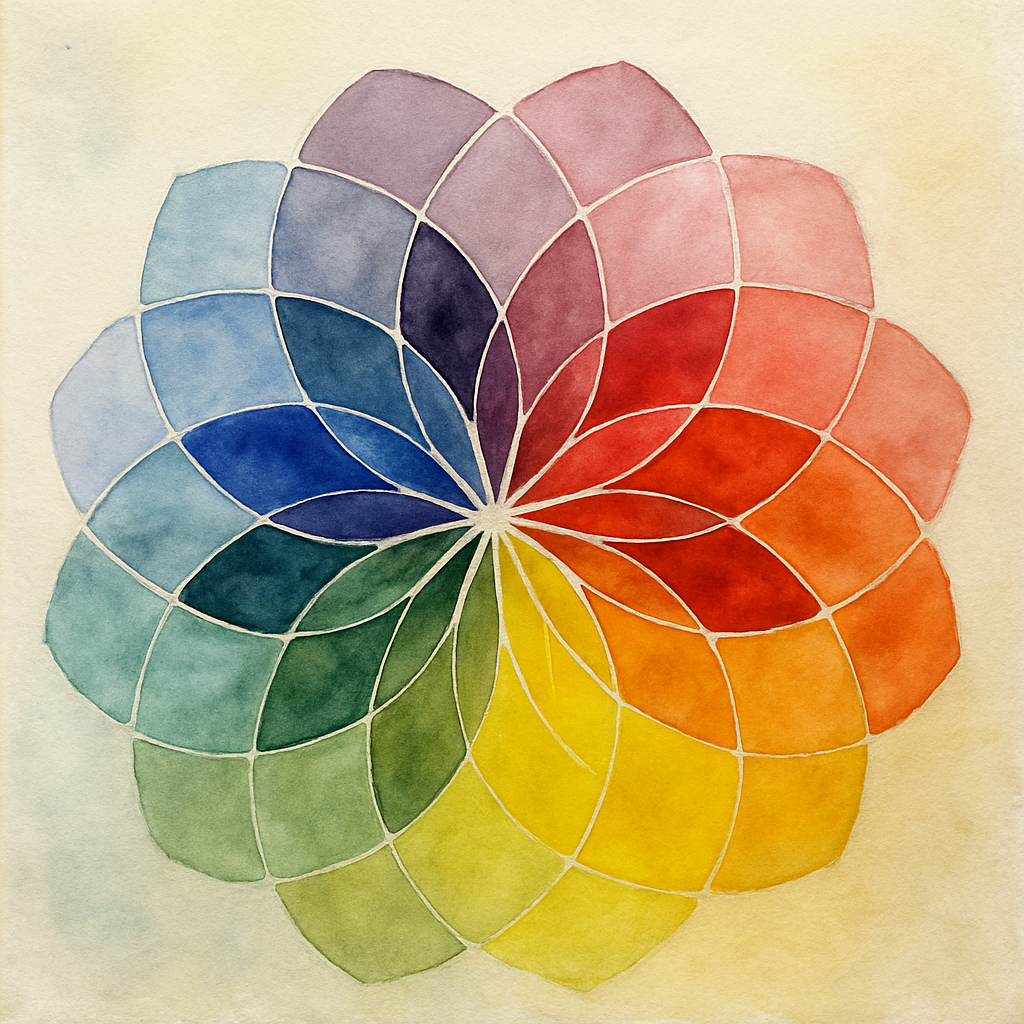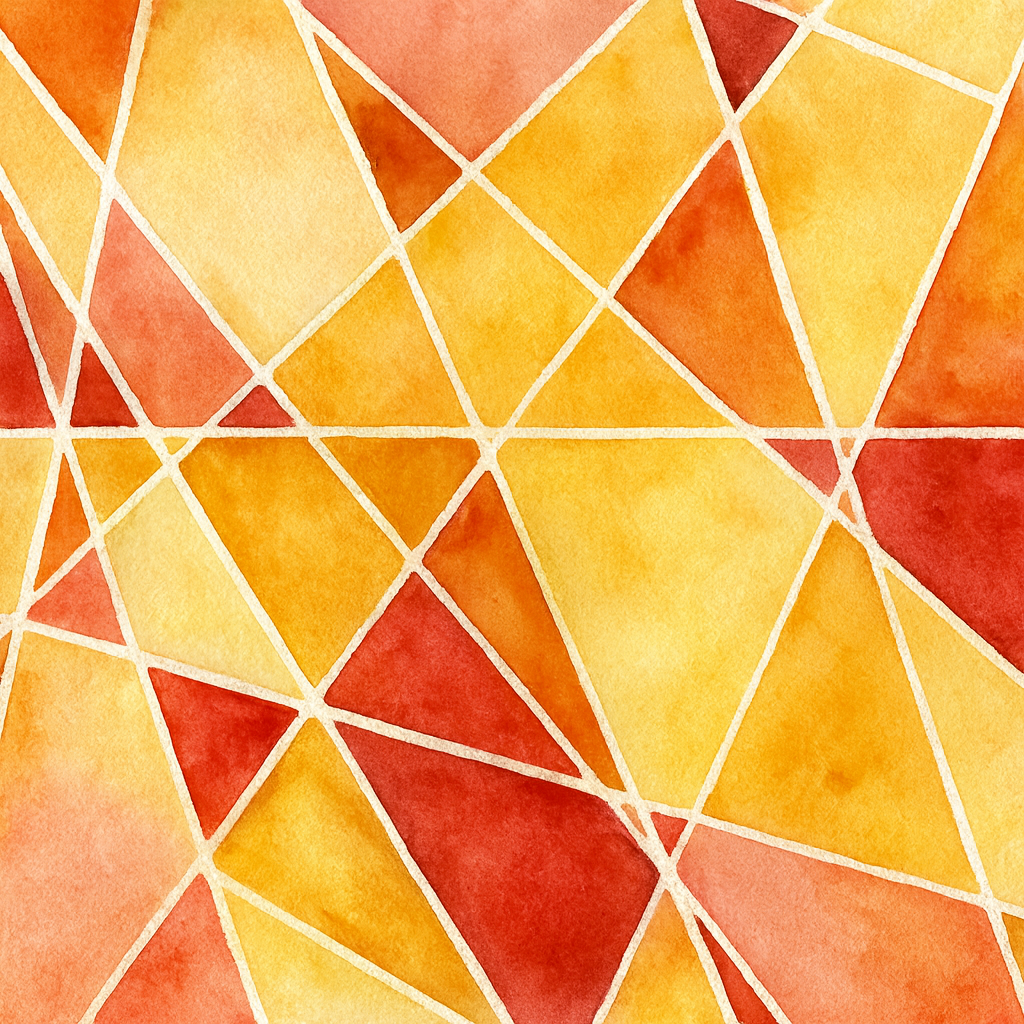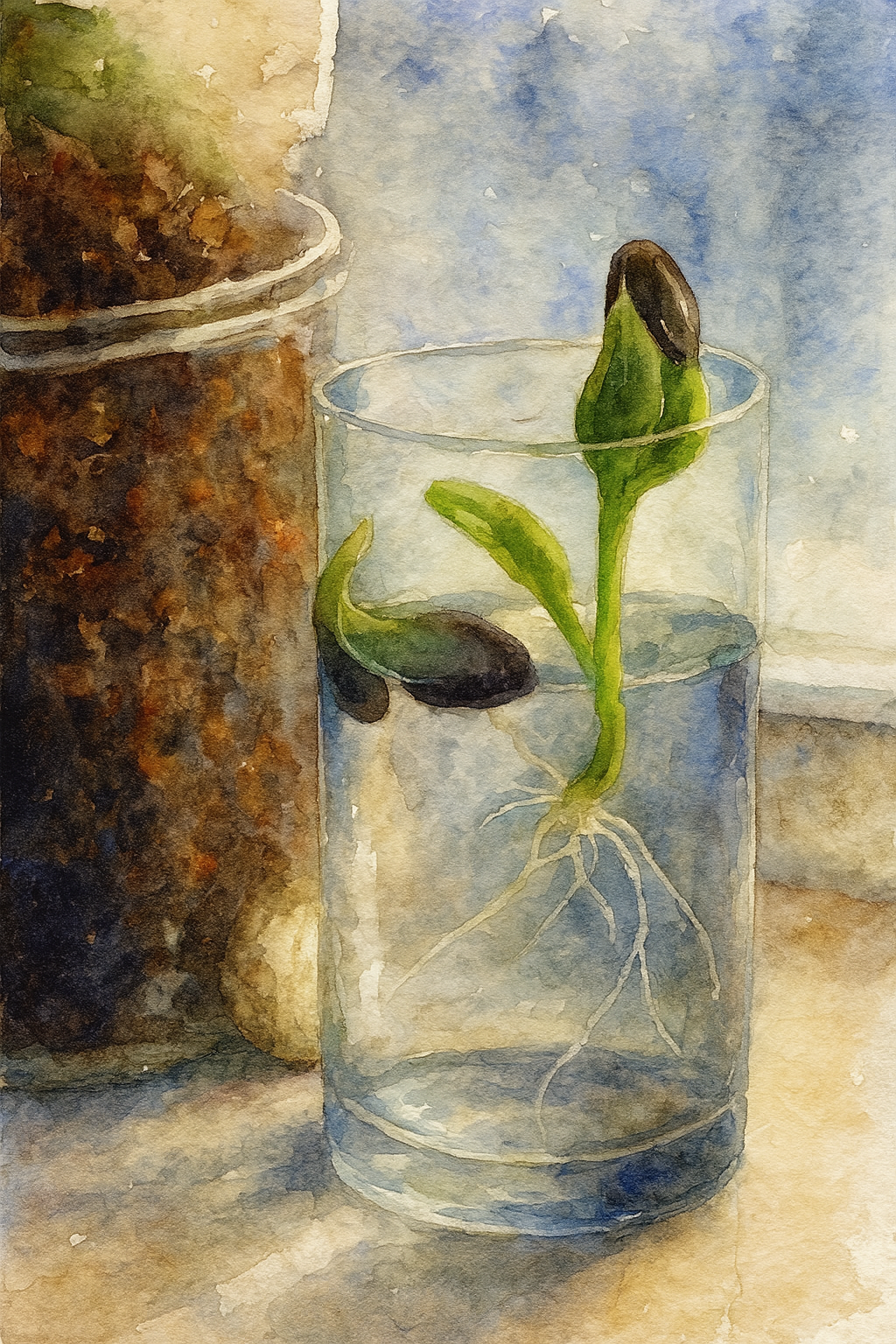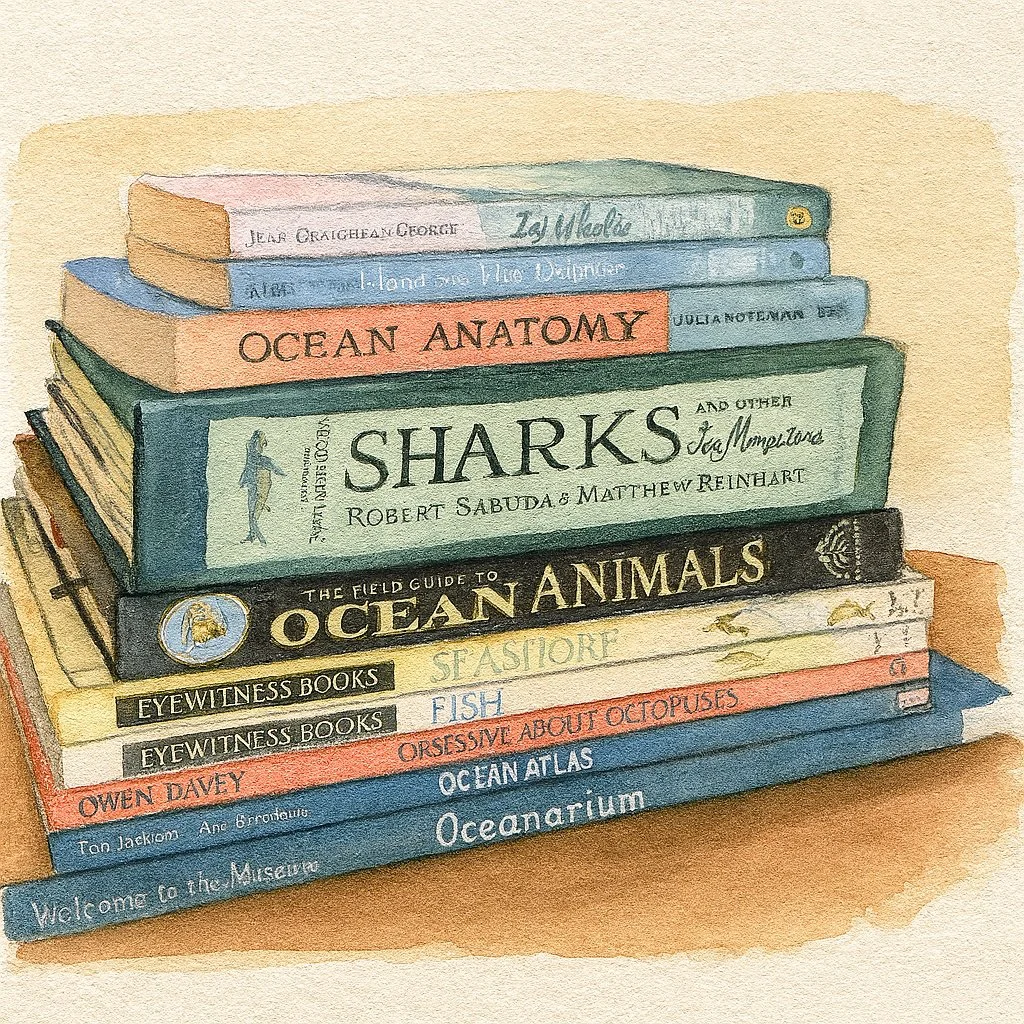Grade 5 | Age 11
In Waldorf education, Grade 5 is often referred to as the “Golden Year of Childhood “. The 11 year-old child stands in the state of remarkable balance and beauty between the innocence of early childhood and the impending changes that will occur with adolescence that are soon to come. With the Nine-Year-Change behind them and a year to settle into who they are, they have a year of physical, mental, emotional and spiritual balance before the upheaval of early adolescence and puberty.
Because they are in a state of “perfection” they seek a harmony, beauty, grace, and perfection, outwardly, and thus the lessons of Botany, Geometry, and Ancient Greece support that child’s need to see those qualities manifested in the world around them.
The Harmony they seek in their outer world is as a result of the harmony, confidence, strength, and grace they possess internally. Before their limbs extend and they become gangly and uncoordinated, and after the emotional appeal of the nine year change, the students of 11 years old, stand tall, are curious, and possess wonder and poise. The curriculum reflects the beauty and order of the world in the main lesson blocks.
This will be the first year that students study recorded history in the main lesson blocks of Ancient India, Ancient Persia, Ancient Mesopotamia, Ancient Egypt, and Ancient Greece.
The transition from myths, stories of the Saints, legends, and fairytales to that of recorded history is balanced with the ancient civilizations which possess a dream like existence between fantasy and reality. These ancient civilizations, according the Waldorf pedagogy believed that the dream state was reality and the waking world was a dream.
While these civilizations were rooted in reality, the study of them highlights their spiritual connection to the unseen world, providing an elevated connection not rooted in the sciences of modern world. In Ancient India, students are exposed to spirituality and cosmic awareness through the study of the Vedas. In Ancient Persia, we see a striving for goodness and truth over darkness with the study of Ahura Mazda. In Ancient Mesopotamia and Ancient Babylon students are exposed to structure, law and earthly order withe study of the Code of Hammurabi which pre-dates the law and justice that students will study more deeply in the Rome main lesson block of Grade 6.
The main lesson block on Ancient Greece resonates deeply with the Grade 5 student’s own feelings of balance, grace and strength. Art, poetry and plays particularly appeal to the Grade 5 student.
The Language Arts main lesson block is based on the readings in the ancient civilizations. Students will continue with grammar, composition and narrative writing. They will include versus or poetry from the ancient civilizations block.
Grade 5 math is very exciting as students are introduced to geometry. Throughout the year, students will continue to practice fractions, decimals, and percents. And they will also continue to practice the four mathematical operations of addition, subtraction, multiplication, and division with 1-, 2-, 3- and 4-digit numbers.
In Geometry, students will use a compass and a straightedge to construct beautifully proportioned geometric shapes. Unlike the geometry of high school, the geometry of the Grade 5 and Grade 6 student is one of awe, reverence and beauty. Students experience sixth division of a circle and the natural proofs that derive from this construction rather than the proofs and theorems that will follow in high school geometry. Division of a circle and base 60 as well as the 360° of a circle are mirrored in the ancient Babylonian main lesson block in history. Once again, the curriculum strives to bring harmony and balance, not just with the student’s development, but overall within the curriculum.
The Botany main lesson block also reflects beauty, harmony, and perfection as students learn about the plant kingdom. As students arrive at bulbs and lilies towards the end of their body made less block, they will once again see how it connects with their geometry studies. Sixth division of the circle is seen in in botany. Other mathematical constants like the Fibonacci sequence or the golden ratio are also highlighted in Botany.
Students learn about local geography in their history main lesson blocks. Landforms, landscapes and how botanicals are a representations of their environments connect geography, geology and botany together.
Artistic representations of lessons continues with the introduction of new art mediums. Wet on wet water coloring fits perfectly with the ancient civilizations, but also using chalk pastels may provide more control as students create their illustrations and yet maintain an ethereal dreamy like composition.
Specialty classes in music, handwork, foreign language and eurythmy continue. Once again these classes support the development of the student. Lessons in the practical arts, games, and the pentathlon are highlights of the Grade 5 year.
The colors of the classroom change year by year, and the Grade 5 classroom is often painted and soft greens and blues, turquoise or teal. This reflects the separation between student and teacher as students draw farther (literally as they inch their desks away) and further (figuratively as they become more private with their thoughts and feelings) away from the teacher. In the younger grades with the warmer colors, students and teachers were inseparable. Students often view the teacher as an infallible loving authority. By Grade 5, the students are more skeptical of their teacher, and hold them to a higher more critical standard. The cool toned classroom reflects the students desire for awareness, freshness, and harmony.
In the home space, the same sentiments will be experienced. As children approach puberty their sense of self separate yet part of a community is tested, their critical nature is awakened and their friends take priority over family. While these changes are experienced to varying degree, you may find that your child expresses some over others, and none at all. Overall, these developmental changes are occuring whether they are outwardly expressed.
The students feel physically and emotionally centered and coordinated for this short time in the Golden Age of Childhood. Coordinated activities like walking on stilts may come easy to these students whereas in just 1-2 years, it will be as if they were never proficient in these tasks. It’s a delight to see students find themselves at age 11 with balance and harmony for this year. Not every child encounters the major challenges of the nine year change or puberty, but every child goes through this development and struggles to some extent either inwardly or outwardly or both. Having the calm in this year is a beautiful thing to experience for the students and the parent/teacher.
In this year, the students intellect is starting to awaken. While they are not ready for critical thinking or abstract thought they are beginning to be more curious about it, and their lessons, especially in geometry reflect that. This moment of equilibrium before adolescence is a moment when the child feels at home in the world.
Waldorf Curriculum | Live Education | 5th Grade
The Live-Education 5th grade curriculum has an emphasis on ancient history, botany and geometry. But just because a formal language arts program may be absent from the curriculum, it doesn't mean it's absent all together. In fact, you'll be surprised at how much writing, dictation and copywork occur with the history and science main lesson blocks. And I am sure you've never seen an introduction to geometry quite like this before.
There are additional materials you'll need for the school year. In addition to a source book for each subject area (you could do without one, but with some subjects, it's highly recommended), you'll need main lesson books, color pencils and the Key to Curriculum workbooks for fractions and decimals.
While there is a single teacher for grades 1st-8th in a Waldorf school, there are also other teachers that a student will interact with on a daily and weekly basis. There are additional lessons that are taught by specialized teachers. For instance, there are foreign language teachers who teach twice a week in the afternoons after the main lesson has been completed by the classroom teacher, there are handiwork teachers, eurythmy teachers, and music teachers who also teacher regularly throughout the year. This provides a nice balance of role models throughout a child's experience at school.
The same can be achieved at home. You may choose to have additional classes for your child and thereby your child will be exposed to other teachers other than yourself.
The same can be achieved at home. You may choose to have additional classes for your child and thereby your child will be exposed to other teachers other than yourself.
You can see the complete lessons for Botany by clicking here.
You can also see the complete lessons for Geometry by clicking here.
Though we didn't do a main lesson for Ancient Egypt recently, we did do an Ancient Egypt Unit Study.
We love the Key To Curriculum Series, and the Live-Education curriculum suggests supplementing the 5th grade curriculum with Key to Fractions and Decimals (and I add percents as well). See my review here.
You can find Year 5 Live-Education curriculum here.
Recently, Oak Meadow sent me the 5th grade curriculum to add to our charter school's resource center for families to use. Before making it there, I was given the opportunity to share the curriculum with you.
In addition to the curriculum itself, there were several historical fiction, history picture books and other historical books to supplement the curriculum. The math portion of the curriculum has been revised and the whole look and style of the curriculum has been updated.
Number Chains is a great little book that can be used for mental math. Questions are multiple step (about 6-7 steps each) and can be done orally (delivered by the teacher) or independently by the student.
You can find more of my curriculum videos here.
You can find the Oak Meadow curriculum on their website.
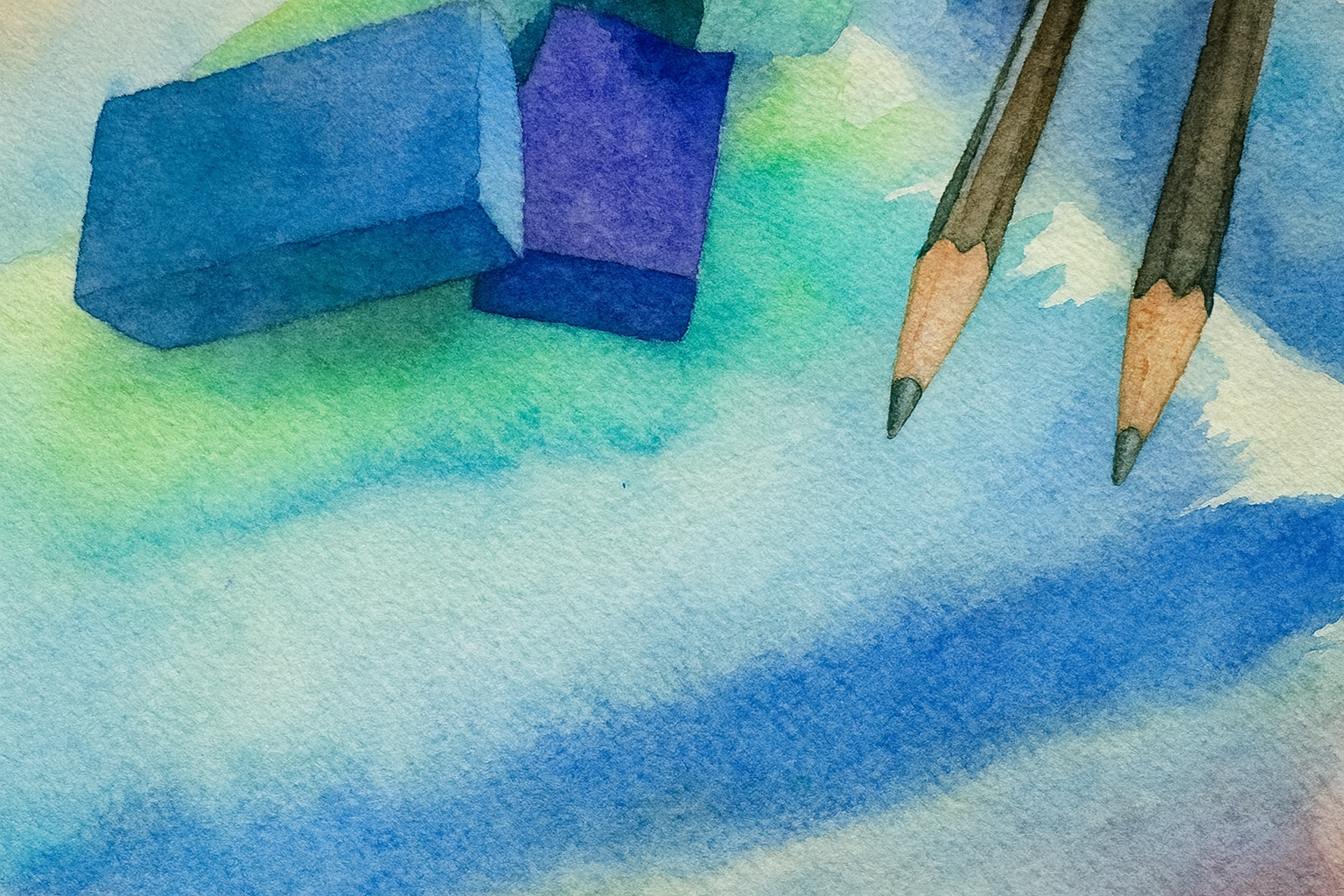
Grade 5
Grade 5
-

Live Education | Curriculum Review | 5th Grade
The Live-Education 5th grade curriculum has an emphasis on ancient history, botany and geometry. But just because a formal language arts program may be absent from the curriculum, it doesn't mean it's absent all together. In fact, you'll be surprised at how much writing, dictation and copywork occur with the history and science main lesson blocks
-
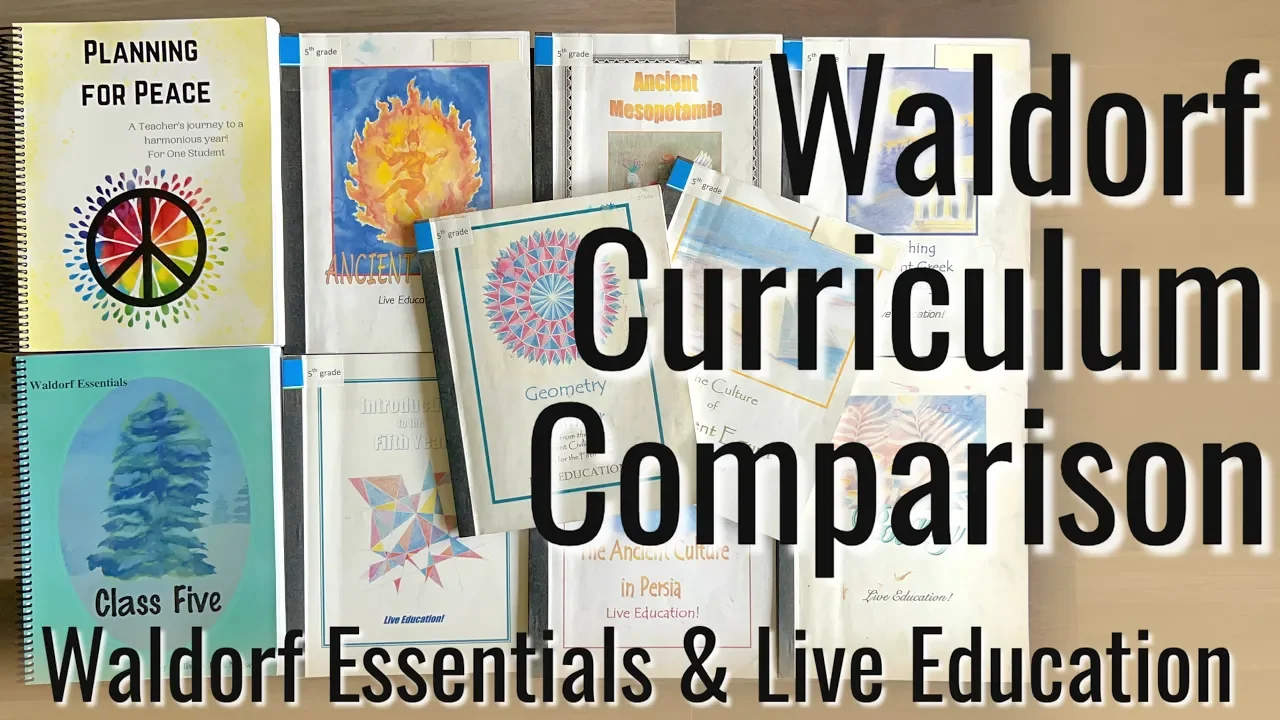
Curriculum Comparison of Waldorf Essentials and Live Education Grade 5
While I haven’t used the Waldorf Essentials curriculum, I’m sharing a comparison of what each curriculum offers. This is a visual comparison with my thoughts on our experience with the Live Education curriculum. We have used Live Education Waldorf curriculum for 20 years.
-
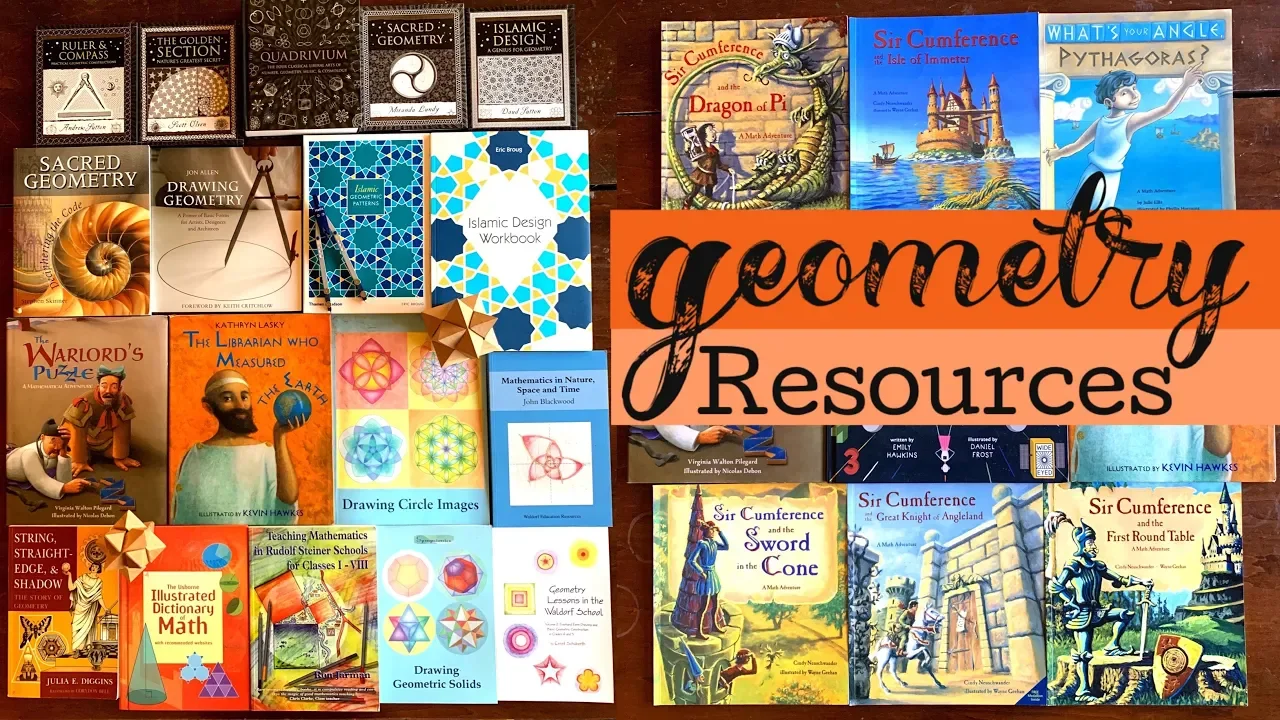
Geometry Resources for Elementary and High School
Geometry is one of the most fascinating fields of math a student will encounter, in my opinion. There's so much you can do when children are young with simple math centered on identification of shapes and solids. While introducing geometry this way and with picture books may not reflect the Waldorf approach authentically, it has been our approach in our homeschool for years.
-

How To Do A MATH Unit Study | GEOMETRY
It's time for a new unit! This time I take you through the process of putting together a math unit. I'm working on a geometry unit and a basic math unit. My default curriculum is always a Waldorf curriculum, and I used the one from Live Education. I recently got many picture books for these units. I got most of them from Rainbow Resource.
Ancient Civilizations
-
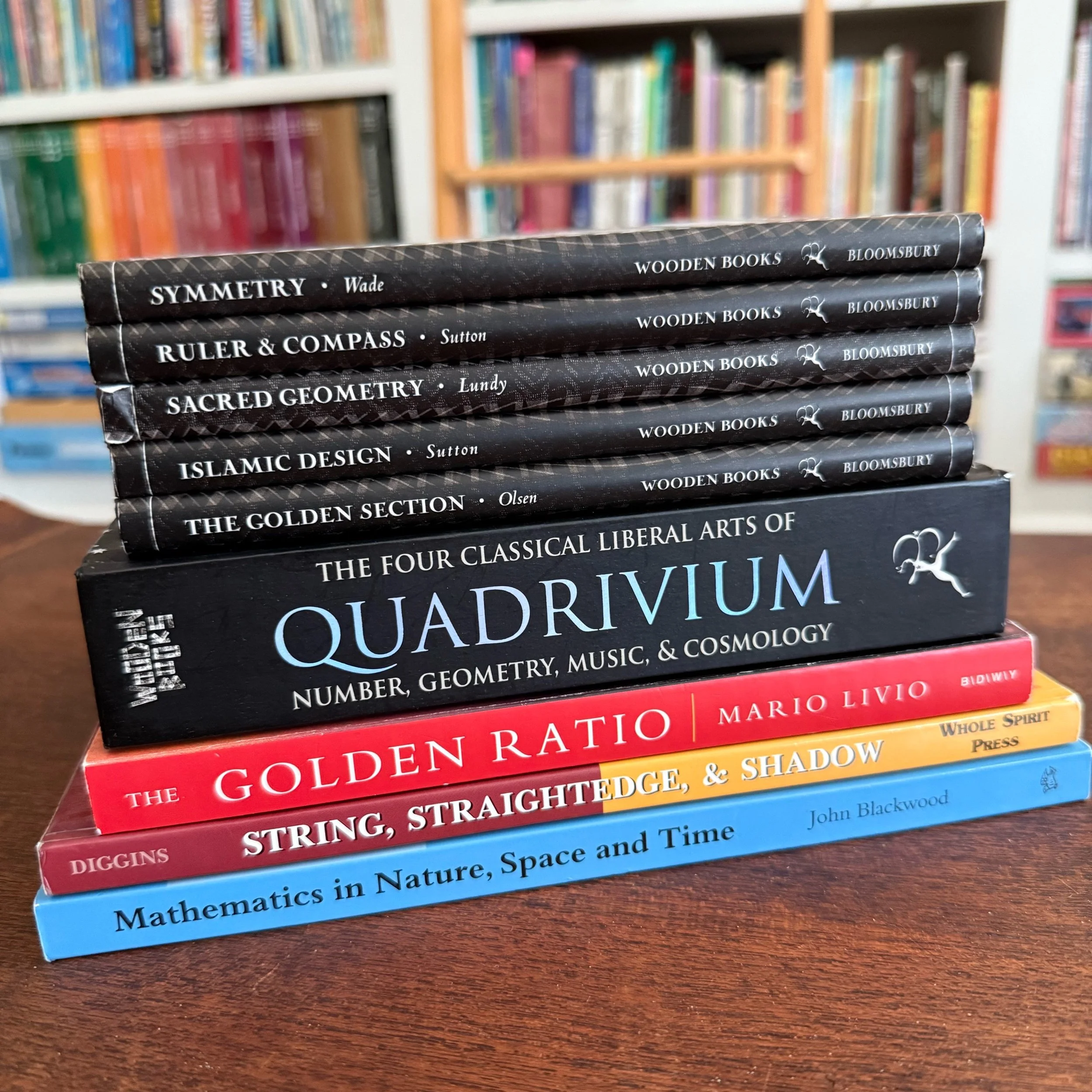
Geometry Resources
One of my favorite subjects in the Waldorf curriculum is Geometry. The way it is presented according the Waldorf pedagogy is perfection, just like geometry itself. Geometry is presented in Grade 5 and again in Grade 6 and both main lesson blocks are artistic, informative and observable. Proofs are discovered through working with the geometric form. Geometry is presented in connection with Ancient Egypt, Ancient Greece, Botany, Mineralogy and Astronomy. Geometry is beautifully integrated into the the Grade 5 and Grade 6 main lesson blocks.
-
Geometry Lessons
We have worked through our Geometry main lesson blocks at least 4 times in the years we have homeschooled and each time it feels new, beautiful and just as wonderful. Some of these lessons are tutorials, others are lessons with my children and yet others are based on the Live Education Waldorf curriculum. In all lessons, you’ll find an artistic representation of the lesson using colored pencils, watercolors or other art mediums. Geometry is meant to be experienced with this beauty and perfection, so have some high quality art materials available so you may enjoy the process and results fully.
-

Algebra Resources
Explore the Algebra resources we have used in our homeschool. We reserve the study of Algebra until Grade 9 and occasionally Grade 8. But as algebra calls on a student’s capacity for critical and abstract thinking, it’s best to present it after puberty when the student may fully engage in the learning. Attempting to introduce a simplified and intuitive form of algebra starting in Grade 1 with questions like “what plus 6 equals 10” does a student a deep disservice as a student that age is not using “X” to qualify an unknown nor is she learning to balance an equation. So this line of teaching needs to be undone before actual algebra may be taught.
-
Geometry Grade 5 Lessons
When I first started sharing our homeschooling journey online, I had already been homeschooling for over 10 years. In that time, I had already done our Geometry block once with my oldest son. Now I was introducing the subject area to my second child but it’s my third child who was only 8 at the time who really loved these geometry lessons as well. I found that because of the artistic nature of these lessons and the slow build of concepts that this presentation of Geometry worked well as a family lesson rather than just for my Grade 5 student. In this way, everyone participated in the Geometry lessons. And everyone enjoyed them!
-

Division of a Circle Lessons
Circle symmetry is one of the most beautiful geometric projects you can easily do with your students. While some symmetries are more complicated, 3-, 4-, 6-, 8- and 12-fold are fairly straightforward and can be achieved with moderate effort and skill, in my opinion and experience. Today's project is a tutorial for threefold symmetry. While you can explore this design and come up with creative ways to paint or color in the shapes, it's not my favorite. I like the symmetry starting at 6-fold symmetry. But, I'd love to see what you come up with. Maybe your creative way of painting this design will change my mind. Honestly, the possibilities are endless and that's exciting.
-

Geometry Grade 6 Lessons
In Grade 5 students are introduced to the beauty and function of geometry with the exploration of shape and how shapes come about in the world around us. Shapes are dynamic even though we see a still shot of quadrilaterals and triangles. In Grade 6 we explore the circle in depth looking at not just 6-division of a circle and its representations in nature and mineralogy, but now we explore 5-division of a circle and the pentagon and the golden ratio. A connection to astronomy and music as well as botany previously illuminates the deep sacredness that geometry of the heavens is astronomy, the geometry of sound is music, the geometry of the mineral kingdom are crystals and the geometry of the plant kingdom is botany.
-
Geometry Grade 7 Lessons
As we advance in Geometry, we explore the book A Beginner's Guide to Constructing the Universe: Mathematical Archetypes of Nature, Art, and Science by Michael S. Schneider. This book details the quality of numbers 1-10. Instead of making the Platonic solids with templates, we learn to make them through the construction of the regular shapes through their the division of the circle. We also do the same with the Golden Rectangle.
Botany Resources, Lessons & Activities
-

Resources & Reviews
Explore the complete list of resources used for our botany main lesson block. Included our books, games, kits, activities, and more. Once I’ve gathered all of our resources, I map out our lessons and activities. Once the main lesson block is over, I review the materials we used and share our reflections on the resources, project activities and lessons.
-
Botany Lessons
Curious to see what of Waldorf main lesson for botany looks like? You can explore the lessons we’ve done for our botany block and unit. While they are organized, according to the curriculum for botany, many of our unit study lessons are included. I hope it leaves you inspired!
-
Projects & Activities
The hands-on approach is my favorite way of learning and teaching. It engages the whole student in an activity which research has shown helps students retain information better, longer and more completely. Additionally, it is a personal love of mine to do hands-on activities whenever possible. What I love about projects is that it can include multiple grades, ages and abilities. Each student produces work according to their skill set.
Ocean Main Lesson Block
-
Resources
In putting together our various ocean themed units, I decided to break them up into smaller blocks as we worked through these topics over the years. You can explore the units on turtles, whales, and our general ocean block.
-
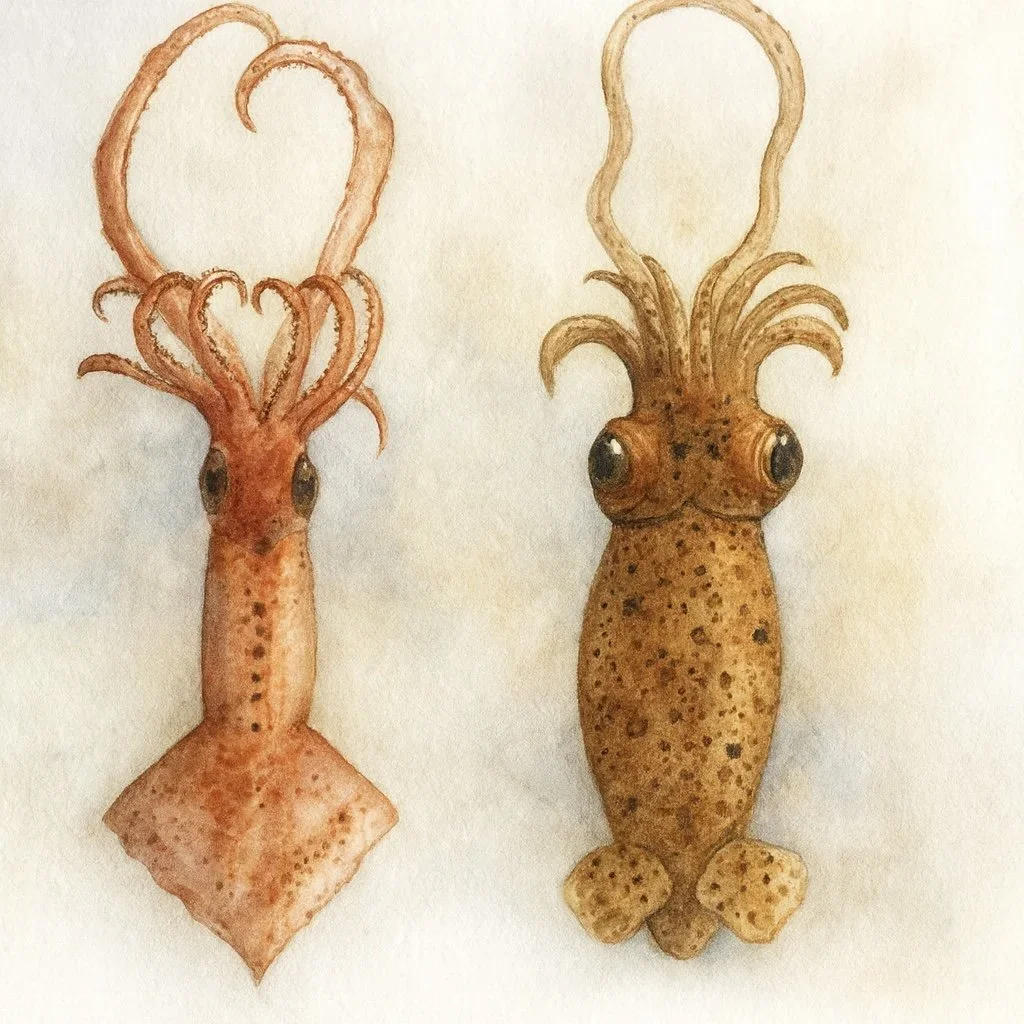
Lessons
Our blocks are made up of lessons and activities. Sometimes lessons are reading from ‘living books’ or presenting an oral lesson I have prepared or working through an illustration for the main lesson book.
-

Activities
Lesson activities and hands-on projects are some of the best ways to learn and remember information and skills. They are memorable and meaningful.
Handwork Projects | Grade 5
-

Knitting with 4 Needles
In grade 5, students begin working with 5 knitting needles to knit in the round. They work on hats and socks and may even complete the set with gloves and a scarf. To begin the year, students are likely to make their own knitting needles using hardwood dowels as they did in grade 1. This time around, they make the needles double pointed.
-

How to Knit a Scarf
Once you learn to knit, you can easily make a scarf. The only thing is that it takes a long time! For that reason, I offer this project when the students are older and can handle the perseverance needed to complete this project. It’s a great project for the students who get through their knitted hats quickly.
-

Knitted Beanie Hats
In this slow tutorial, I walk you through the basics of knitting so you can knit a hat or beanie for a peg doll. I have three patterns to share with you inspired by the pattern in the book Making Peg Dolls by Margaret Bloom on the Martinmas peg doll tutorial.

Grade 5
Waldorf Curriculum | Live Education | Curriculum Review | 5th Grade
The Live-Education 5th grade curriculum has an emphasis on ancient history, botany and geometry. But just because a formal language arts program may be absent from the curriculum, it doesn't mean it's absent all together. In fact, you'll be surprised at how much writing, dictation and copywork occur with the history and science main lesson blocks. And I am sure you've never seen an introduction to geometry quite like this before.
There are additional materials you'll need for the school year. In addition to a source book for each subject area (you could do without one, but with some subjects, it's highly recommended), you'll need main lesson books, color pencils and the Key to Curriculum workbooks for fractions and decimals.
While there is a single teacher for grades 1st-8th in a Waldorf school, there are also other teachers that a student will interact with on a daily and weekly basis. There are additional lessons that are taught by specialized teachers. For instance, there are foreign language teachers who teach twice a week in the afternoons after the main lesson has been completed by the classroom teacher, there are handiwork teachers, eurythmy teachers, and music teachers who also teacher regularly throughout the year. This provides a nice balance of role models throughout a child's experience at school.
The same can be achieved at home. You may choose to have additional classes for your child and thereby your child will be exposed to other teachers other than yourself.
The same can be achieved at home. You may choose to have additional classes for your child and thereby your child will be exposed to other teachers other than yourself.
You can see the complete lessons for Botany by clicking here.
You can also see the complete lessons for Geometry by clicking here.
Though we didn't do a main lesson for Ancient Egypt recently, we did do an Ancient Egypt Unit Study.
We love the Key To Curriculum Series, and the Live-Education curriculum suggests supplementing the 5th grade curriculum with Key to Fractions and Decimals (and I add percents as well). See my review here.
You can find Year 5 Live-Education curriculum here.
Recently, Oak Meadow sent me the 5th grade curriculum to add to our charter school's resource center for families to use. Before making it there, I was given the opportunity to share the curriculum with you.
In addition to the curriculum itself, there were several historical fiction, history picture books and other historical books to supplement the curriculum. The math portion of the curriculum has been revised and the whole look and style of the curriculum has been updated.
Number Chains is a great little book that can be used for mental math. Questions are multiple step (about 6-7 steps each) and can be done orally (delivered by the teacher) or independently by the student.
You can find more of my curriculum videos here.
You can find the Oak Meadow curriculum on their website.
Curriculum Comparison of Waldorf Essentials and Live Education Grade 5
While I haven’t used the Waldorf Essentials curriculum, I’m sharing a comparison of what each curriculum offers. This is a visual comparison with my thoughts on our experience with the Live Education curriculum.
We have used Live Education Waldorf curriculum for 20 years.
You can find Melisa at Waldorf Essentials all over Social media and on the Waldorf Essentials website.
Find the complete Live Education Waldorf curriculum from KG to grade 8 on the Live Education website.
I compared the Live Education Grade 5 curriculum, which I have used for about twenty years, with the newly updated Waldorf Essentials Class 5 curriculum created by Melissa for Waldorf Essentials. Live Education was written by Waldorf-trained classroom teachers and follows the traditional Waldorf pedagogy very closely, offering extensive teacher content and support. Waldorf Essentials is written by a homeschooling Waldorf parent and is designed to be beautiful, practical, and user-friendly, with guidance, coaching, and a digital option that makes it easier to access and apply at home.
I have used Live Education through many grades with my four children, so I know it well. Although I have not taught from Waldorf Essentials (nor do I plan to), you can see that it feels more approachable for a homeschooling family and for teachers/parents who have less familiarity with Waldorf education. Live Education is very thorough, more intensive and assumes that the parent or teacher has a strong background in the Waldorf approach.
Waldorf education as a whole is based on the child’s developmental stages, not just on academic skill level. The stories are the foundation of the lessons, and academics are built around them. I plan my school year rhythmically: head subjects like math and grammar in the fall, history and writing in the winter, and science in the spring. Each main lesson unfolds over several days so the material can rest and deepen. I prefer a three-day lesson rhythm where I tell the story one day, revisit it with writing or drawing the next, and complete it with an activity on the third. Although the Waldorf ideal is oral storytelling, I often read directly from the lesson books, especially when I have limited time.
Live Education Grade 5 includes a helpful introduction that explains the child’s development and offers examples of scheduling and block organization. The grade’s main lesson blocks include Botany, Geometry, and five history blocks: Ancient Greek Mythology, Mesopotamia, Persia, Ancient India, and Ancient Egypt. The books are teacher-focused and contain lesson content, activities, dictation options, and narration suggestions. Geometry and Botany are large enough to divide into two shorter blocks, and each history block can run three to four weeks. I find that Ancient Egypt is the easiest to support with outside resources, while Ancient Persia can be harder to find materials for. I prefer to use watercolor and chalk pastel with the ancient stories because they suit the mood of myth and legend.
The Waldorf Essentials Class 5 curriculum contains the entire year in one spiral-bound book, organized chronologically through the blocks. It moves from Math to Geography and Ancient Cultures, back to Math, then on to new culture studies. The updated version includes full-color illustrations and photographs, making it easy to copy artwork for main lesson books. It also provides notes on home rhythm, meal planning, festivals, and how to work with mixed ages. There is a digital version available, which is useful for international families or those who prefer electronic access.
Melissa’s companion planner, Planning for Peace, is almost twice as thick as the curriculum itself. It includes block planning, meal plans, calendars, temperament studies, meditation prompts, and other tools that help keep the homeschool organized and intentional. I find it valuable because it recognizes that homeschoolers manage both teaching and home life simultaneously.
In comparing the two, Live Education is more expensive, typically in the mid-hundreds per grade, but it is also more thorough and teacher-centered. Waldorf Essentials feels lighter to implement and more affordable, especially for those new to Waldorf education. Live Education provides a deep, faithful presentation of Waldorf pedagogy, while Waldorf Essentials offers a flexible, parent-friendly approach that helps families bring the spirit of Waldorf into daily life without feeling overwhelmed.
Both programs can be enhanced by adding cooking projects, handwork, nature walks, and a few well-chosen picture books or historical fiction titles. I have learned that a few intentional additions enrich the lessons far more than a long list of extras. Live Education offers depth and rigor for experienced teachers, while Waldorf Essentials provides beauty, support, and realistic rhythm for home educators.
Geometry Resources for Elementary and High School | Books, Curriculum & Workbooks
My favorite subject of all of the math blocks is geometry taught the Waldorf way. It might even be my favorite main lesson block of all! Though Botany and Astronomy are right up there in the top three. What makes the Waldorf approach so engaging in this subject area is all the art that accompanies the lesson. If that last sentence sent a way of anxiety through your being, take care, I'll ease your fears about Waldorf geometry with plenty of tutorials and lots of encouragement.
Geometry is one of the most fascinating fields of math a student will encounter, in my opinion. There's so much you can do when children are young with simple math centered on identification of shapes and solids. While introducing geometry this way and with picture books may not reflect the Waldorf approach authentically, it has been our approach in our homeschool for years. I love adding living books into our lessons because I'm often at a loss for stories of my own. Plus, I am not a teacher by profession and rarely solely rely on a curriculum, so I appreciate the breadth and depth of the books and resources available.
